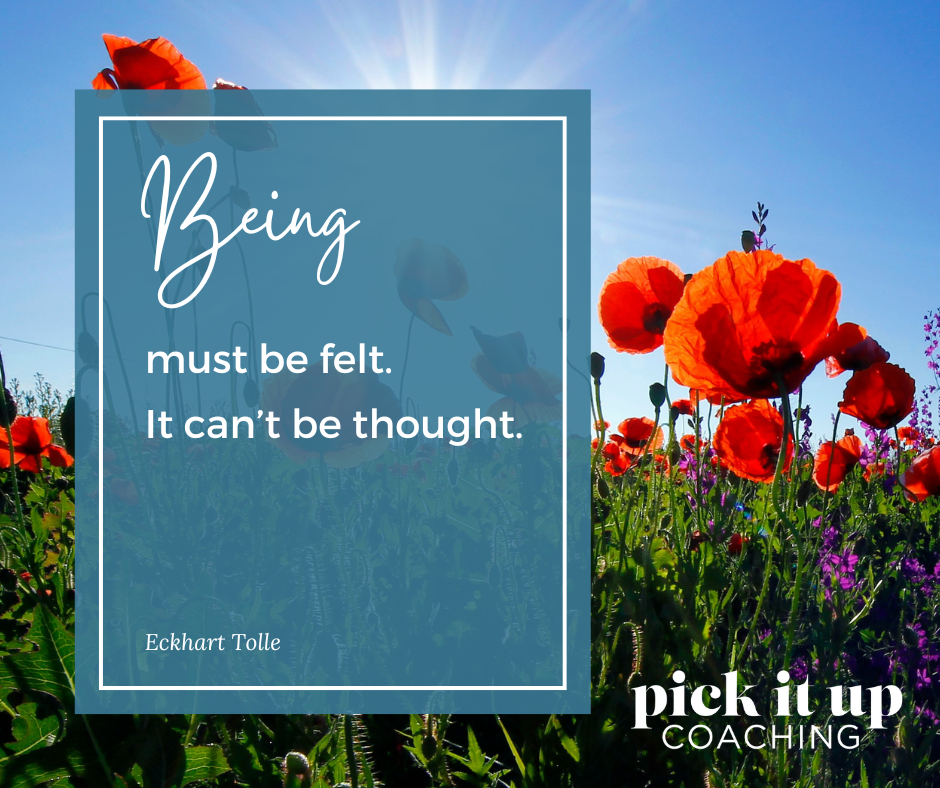|
Image: Corina Ardeleanu Unsplash Our bodies are sending us signals all the time. Whether it's butterflies in our stomach or a racing heart, our body is communicating with us. Often the last thing we want to do is listen. But as it turns out, listening to our bodies is one of the best things we can do for our well-being. THE NARRATIVE SELF Who are we? We all have a story about our lives that we tell ourselves. This story is ongoing, and often all-consuming, but something we barely notice. It can bring us joy or pain, happiness or sadness. But whatever the story is, it affects how we perceive our reality. It turns out this “story of us” narrative thinking takes place in a specific area of the brain called the Default Mode Network. The neural imaging research of Prof. Norman Farb shows us that when we are thinking of things related to “ourselves”, it lights up an area down the center line of our brains. These areas of narrative thinking are the part of the brain that is “on” by default. This is our automatic thinking - the stuff we don’t even notice. This is also the place where things such as negative and positive self-talk occur. We could call this thinking our constructed identity or ego. Research shows us that at the same time that our automatic thinking is “on”, another part of the brain is actively being suppressed. This is the physical-sensory part of the brain. When we are engaged in automatic thinking, we are actively suppressing physical sensory information. THE EXPERIENTIAL SELF Is there another way to relate to our existence? Yes, it’s called the experiential mode. Prof. Farb scanned research subjects both before and after taking an eight-week Mindfulness-Based Stress Reduction (MBSR) class. In these classes, participants were given 20 hours of mindfulness training, much of it based on sitting in physical sensory experience. When participants' brains were scanned after the eight-week class, these subjects showed the ability to “turn down” the volume in the automatic, narrative area of the brain. They were simultaneously able to “turn up” the volume on the parts of the brain associated with momentary sensory experience. In other words, they could stay in a place of sensory intake longer, and sit in their physical experience without getting sucked back into their story. WHY DOES IT MATTER? Is one mode of thinking better for us than the other? Prof. Farb’s research shows that being in a place of sensory intake helped people relate to their experience in a more flexible way. As he stated, it helps us see that “the perspective you are holding is just one of many options… being able to shift between two ways of perceiving a situation is a game-changer.” In his research on depression, he found that people with the MBSR training were able to interrupt negative narratives and not wholly buy into them. They stopped telling the story long enough to question it and remember there are other ways of thinking about their experience. In neural imaging, he found that people who have depression are blocking out the sensory information coming from their bodies and instead focusing on the narrative story. In short, we can improve our emotional health and well-being by training ourselves to sit with physical sensations. What does this all mean for coaching? Helping clients to get out of “the story in their head” and into “the sensation in their bodies” can be enormously beneficial to their well-being. By giving clients tools that promote body-centered mindfulness, we can help them access greater flexibility of thinking, curiosity about their experience, and the capacity to sit with uncomfortable feelings. Dr. Farb’s research subjects took an eight-week Mindfulness-Based Stress Reduction (MBSR) class, but we can start with a simpler practice — a short (two-minute!) meditation with your phone or fitness tracker. If you want to be tech-free, sit in the sun, close your eyes, and feel the breeze on your face. Giving ourselves a moment of sensory intake can help us shift from a reactive state to a responsive one. Being able to shift our perspective is important in coaching, and it's wonderful to know that our bodies can help us create this opening for change. My question for you: if you notice yourself feeling stressed, try the above breathing exercise or another form of body awareness such as a short meditation. How do you feel afterward? Could this be a tool to help increase your presence? See you soon. For more on mindfulness see My Favorite Centering Exercise. RESOURCES: “How Mindfulness Changes Your Brain with Prof. Norman Farb”, School of Becoming Mindfulness-Based Stress Reduction MBSR was developed at the Stress Reduction Clinic at UMass Medical Center by Jon Kabat-Zinn. Classes are widely available online. Ten Percent Happier Podcast This is a wonderful educational podcast created by Dan Harris. I love that Dan approaches each mindfulness idea as both a believer and a skeptic. Give it a listen! Tara Brach Podcast Tara Brach is a meditation teacher and author who shares her talks and guided meditations through her podcast. With a relaxing voice, plenty of wisdom, and humor, I find these to be the perfect evening guided meditation. If you’re ready to discover the power of coaching schedule a complimentary Clarity Call today.
0 Comments
|
AuthorErin Becker is a Archives
April 2024
Categories
All
|




